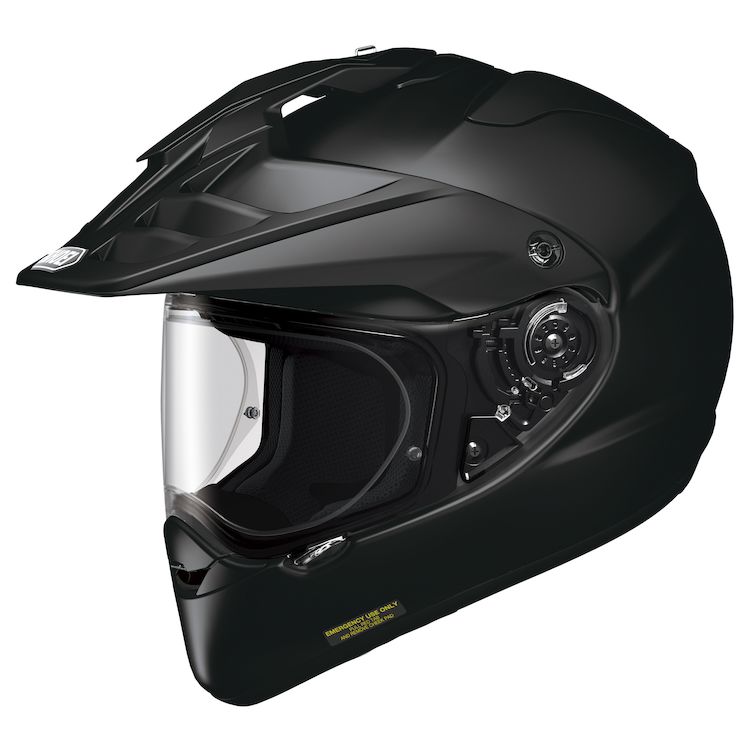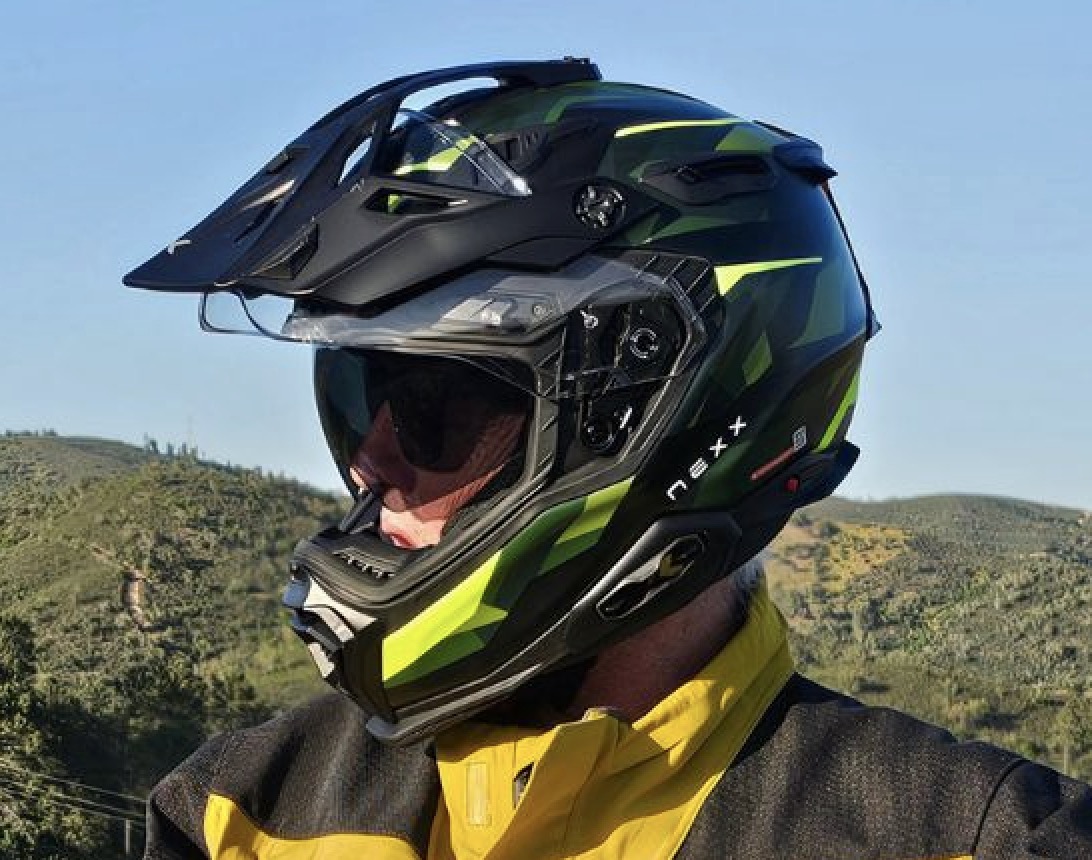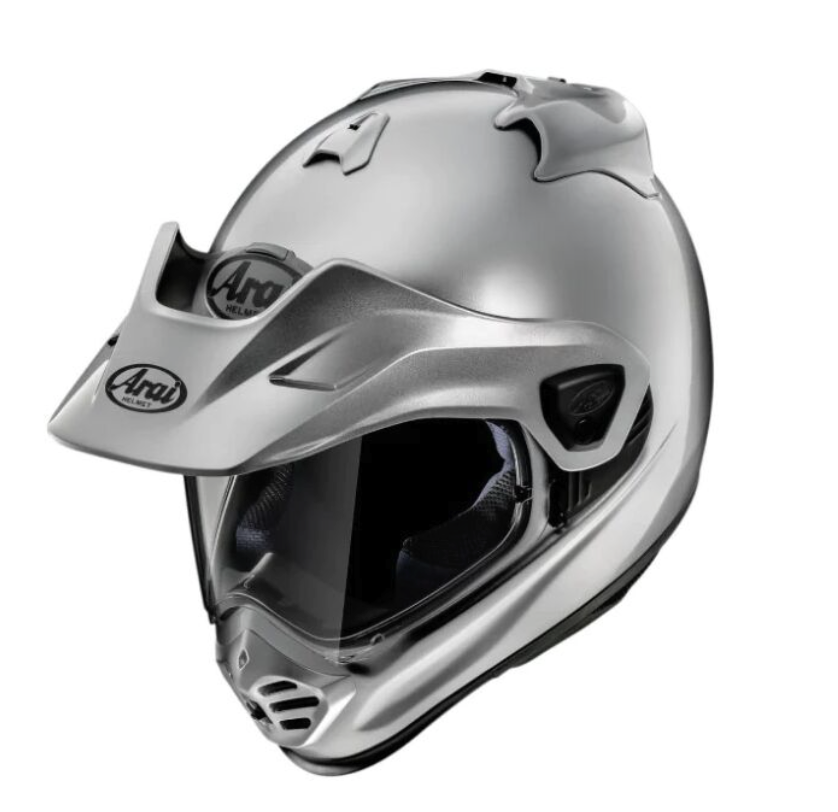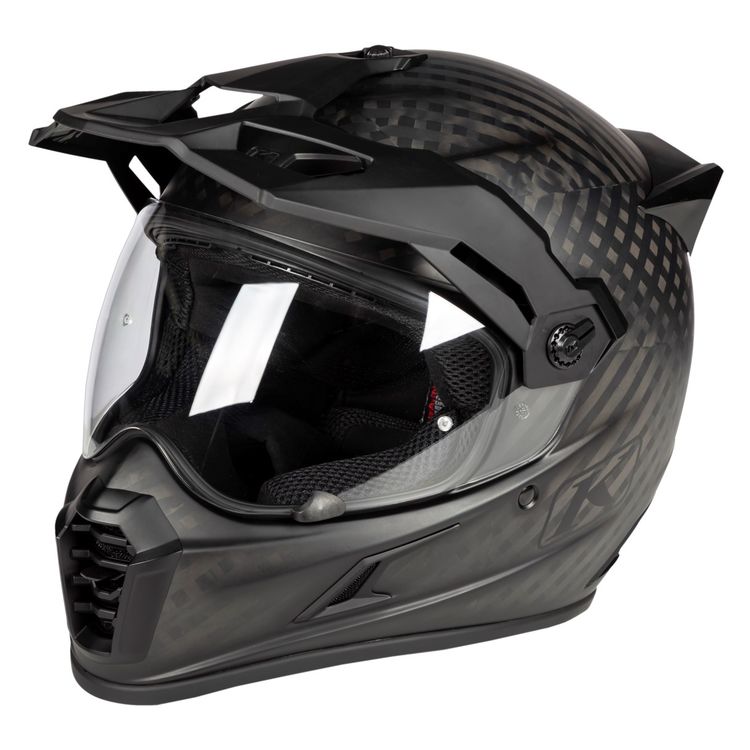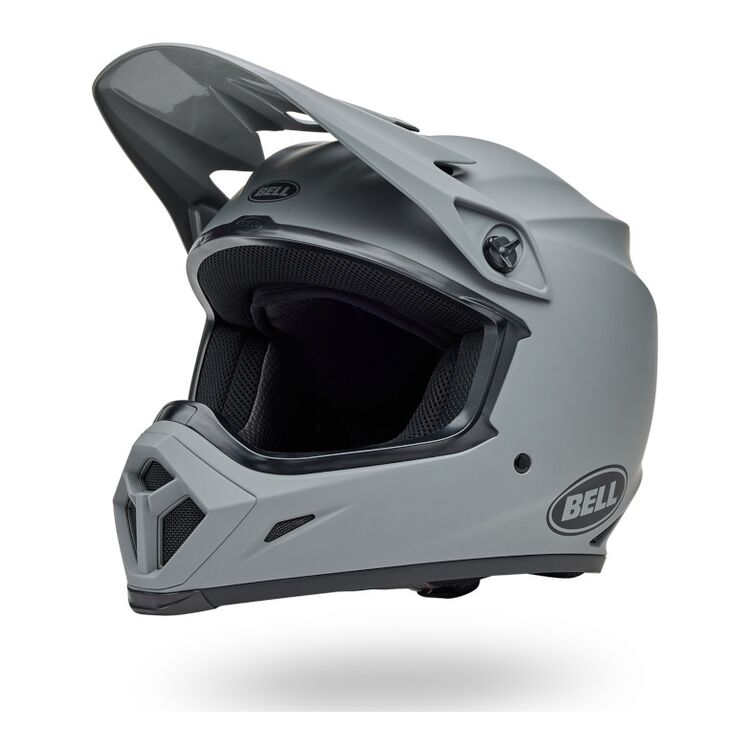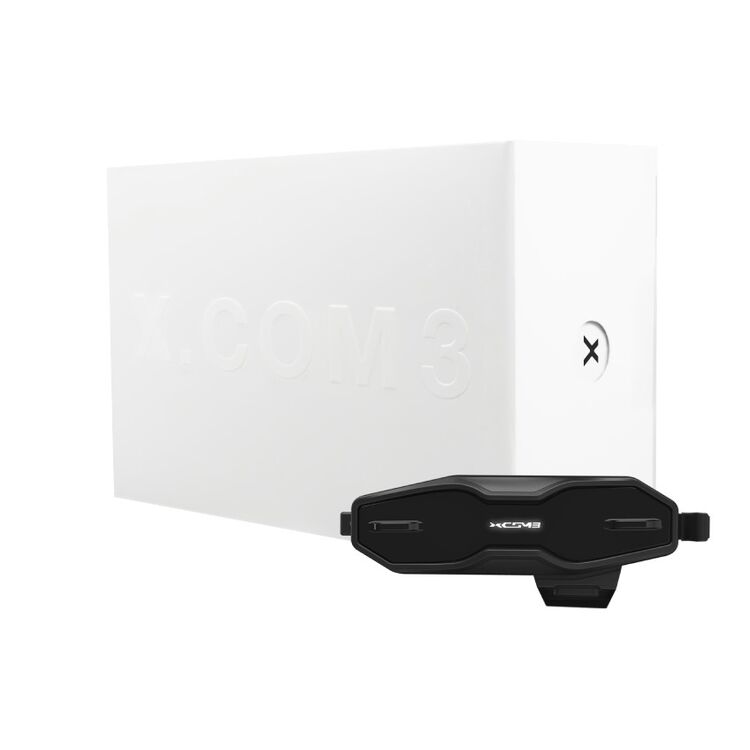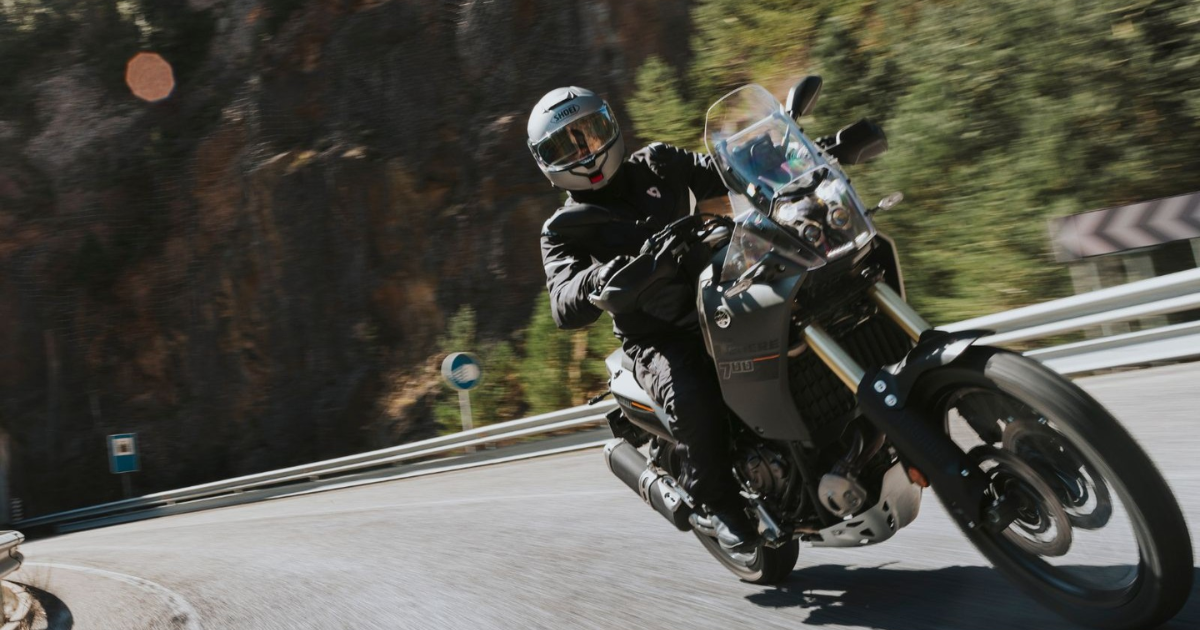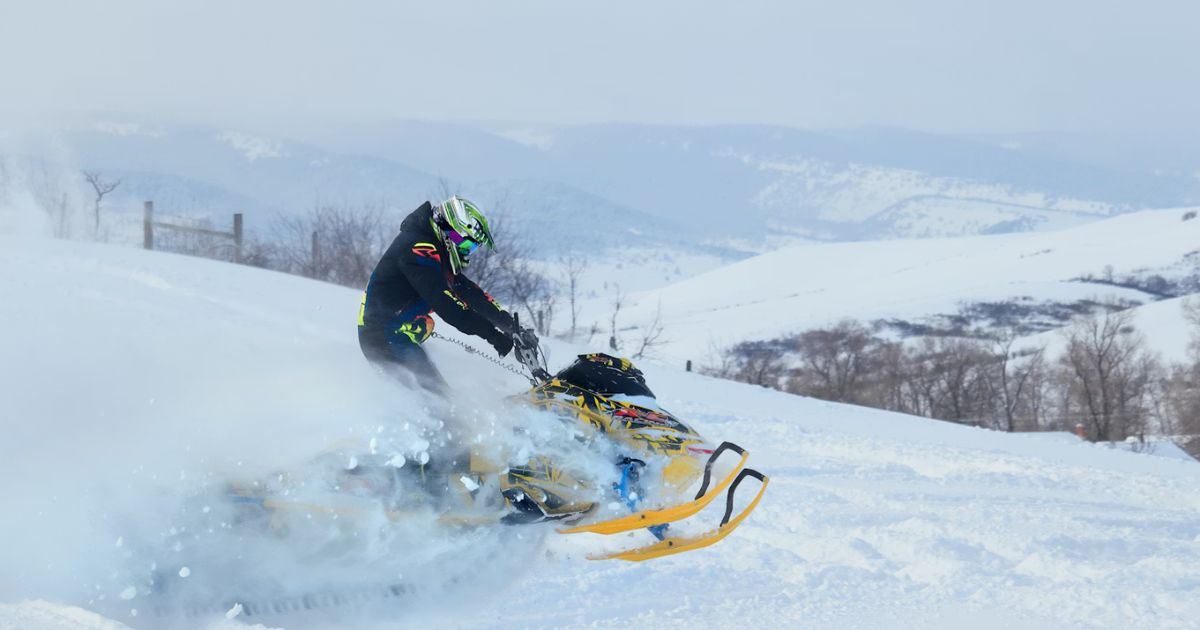
Shoei Hornet X2 vs Nexx X.WED3: Better Choice for ADV Touring?
left for contents
Picking the right ADV helmet can feel like a mini-adventure in itself. If you’re trying to decide between the Shoei Hornet X2 and the Nexx X.WED3, you’re definitely not alone—I’ve had this exact debate with a few riding buddies.
Both helmets are trusted names in the dual-sport scene and come packed with features, but they go about things a bit differently. Our Senior Editor JM Staelens currently rides with the Shoei Hornet X2, while I’ve also done a full Nexx X.WED3 helmet review covering comfort, airflow, and long-distance usability over a three-day adventure ride.
Whether you’re clocking miles on the highway or ducking into dusty trails, one of these might be the better fit depending on your priorities. Here’s a fast take to point you in the right direction—stick around after for all the details.
Quick Verdict: Who’s This Helmet For?
Who should buy the Shoei Hornet X2:
- Riders who prioritize a quiet adventure helmet; numerous testers call it one of the quietest in the category despite the bill, with less buffeting than most ADV lids.
- Those who ride long highway miles and want road‑orientated aerodynamics. The four‑size AIM+ shell and V‑460 peak reduce lift and turbulence, making high‑speed touring less fatiguing.
- Buyers willing to pay roughly $150–$200 more for premium fit‑and‑finish, a five‑year warranty and proven Snell + DOT safety ratings.
Shoei Hornet X2 Adventure Helmet delivers the perfect blend of on-road comfort and off-road capability for serious adventure riders.
- Lightweight AIM+ shell for superior protection and aerodynamics
- Advanced ventilation system for optimal airflow in all conditions
- Emergency Quick-Release System for enhanced rider safety
- Runs small, sizing up is recommended
Who should buy the Nexx X.WED3:
- Adventure riders seeking maximum ventilation and versatility with an adjustable peak, seven closable intake vents and four exhaust ports. The Mid Airflow Chamber and anti‑vibration EPS help manage heat and turbulence.
- Those who value integrated features like a larger drop‑down sun visor, F.R.S. quick‑release cheek pads, goggle strap holder, action‑camera mounts and intercom‑ready design.
- Buyers with a moderate budget who want ECE 22‑06 & DOT certification without paying Shoei money; composite‑shell versions typically retail between $450 and $660, while carbon variants range $770–$900.
A premium helmet at midrange price: advanced composite or full carbon fiber shell, flexible ventilation system, integrated comms, and versatile street + off-road design that doesn't require tools to switch. Long term review here.
- Big eyeport
- Lightweight
- Anti-vibration system
- So popular it's often out of stock
The Shoei Hornet X2 costs roughly $150–$200 more than the composite Nexx X.WED3, but the extra spend delivers a quieter ride, longer warranty and refined road manners. Riders who emphasise airflow, integrated tech and a lower price will find the Nexx better value.
Specs Side-by-Side: Fast Facts
| Specs | Shoei Hornet X2 | Nexx X.WED3 |
|---|---|---|
| Weight | ~3.9 lb (Medium); AIM+ shell; weight distribution reduces fatigue | Composite version: ~3.9 lb (1,790 g); carbon variant: ~3.6 lb (1,650 g) |
| Fit/Shape | Intermediate‑oval; four shell sizes ensure precise sizing | Intermediate oval with three shell sizes; runs true‑to‑size; F.R.S. cheek pads for emergency removal |
| Shell/Materials | AIM+ (Advanced Integrated Matrix Plus) multi‑fiber shell with fiberglass and organic fibers | X‑Matrix 2 multi‑composite (fiberglass + organic fibers + aramid); optional X‑Pro carbon fibre shell |
| Safety/Certifications | Dual‑certified to DOT and Snell M2020D; multi‑density EPS liner; emergency quick‑release cheek pads | ECE 22‑06, DOT FMVSS 218, CCC and NBR‑7471; anti‑vibration EPS with crash‑bumpers |
| Ventilation/Weatherproofing | Two shutter‑controlled top vents, large chin vent, four rear exhausts and neck outlets; visor channels air to upper intake; Pinlock anti‑fog insert included | Seven closable intake vents, four exhaust outlets, Mid Airflow Chamber and Air Cumbs cooling system for fresh‑air circulation; adjustable peak extensor; Pinlock insert (70 or 120 depending on model) |
| Electronics/Comms | Not comms‑integrated but has recessed ear pockets for speakers; works with aftermarket intercoms | Prepped for X‑COM3 intercom; built‑in speaker and mic channels; includes action‑camera mounts and goggle strap holder |
| Warranty | Five years from purchase or seven from manufacture | Two years against manufacturing defects |
| Street Price (typical) | $599–$719 depending on colour and graphics | Composite shells: $449–$659 (Trailmania ~$449, standard ~$520, Gobi ~$659); Carbon variants: $770–$899 |
Which Helmet Fits Your Ride Style?
Choose the Shoei Hornet X2 if…
- Quiet ride matters most. Testers consistently praise the Hornet X2 for being among the quietest ADV helmets. The cheek‑pad seal, chin curtain and smooth chin bar minimize wind roar, and the V‑460 peak has vents that channel air rather than catching it. On long highway sections, it’s noticeably quieter than many competitors.
- You prioritize road performance. Shoei tunes the aerodynamics for touring; the peak and shell shape produce little lift, and the helmet feels planted at higher speeds. Weight distribution is excellent, reducing neck fatigue during day‑long rides.
- You want Snell certification and a long warranty. Dual DOT and Snell M2020D approval adds peace of mind for hard off‑road hits, and Shoei’s five‑year warranty (seven from manufacture) is one of the longest in the industry.
- Fit and finish are a priority. The 3D Max‑Dry System II liner absorbs sweat rapidly and is fully removable. Four shell sizes allow a more compact profile, and details like the CNS‑2 shield’s robust gasket and tool‑free visor removal speak to Shoei’s craftsmanship.
- You wear earplugs and still prefer quiet. Even with earplugs, some ADV lids transmit low‑frequency rumble; the Hornet X2’s dual‑density EPS and sealed fit dampen this more effectively.
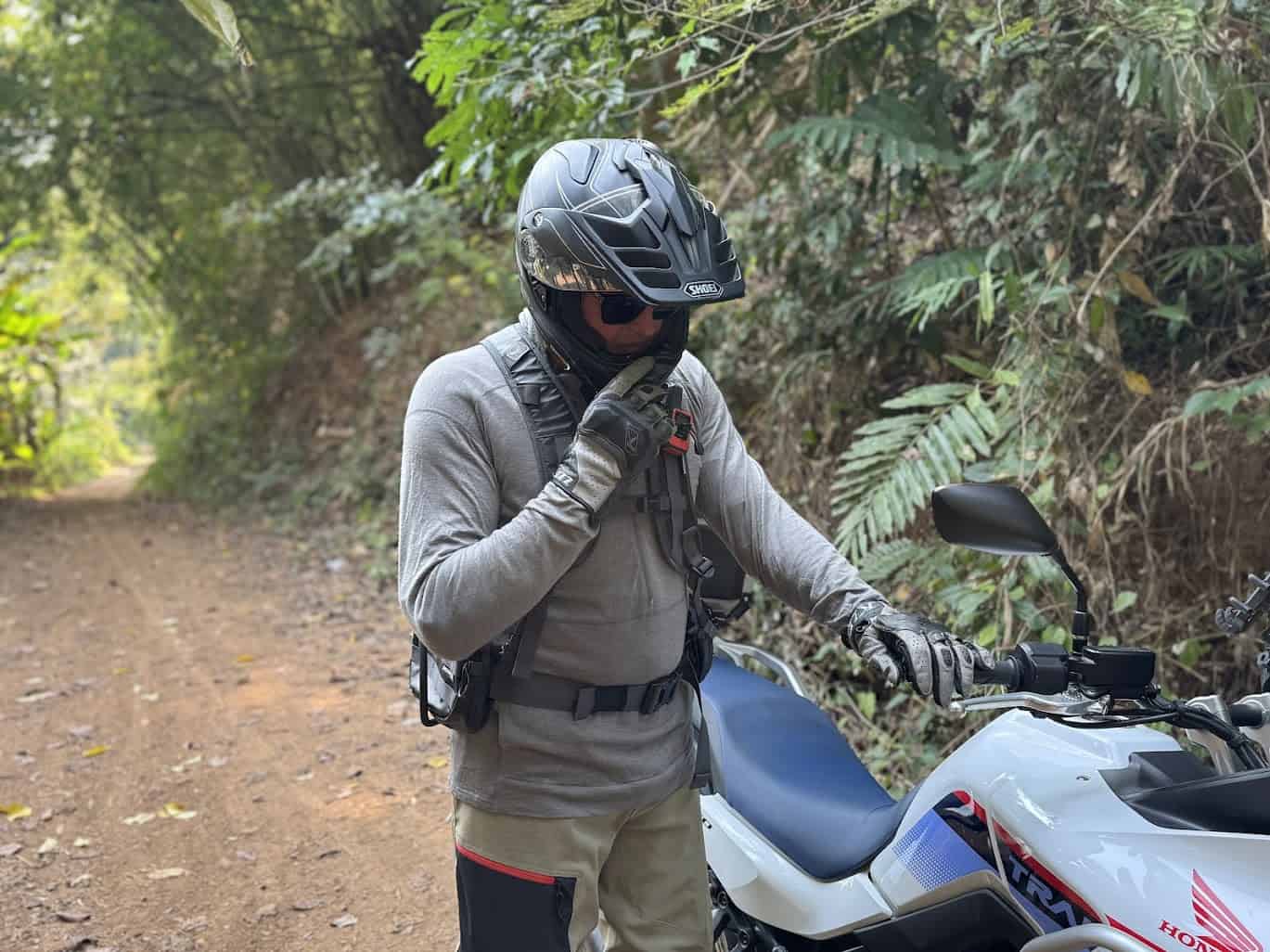
Choose the Nexx X.WED3 if…
- You ride in hot climates or do technical off‑road. With seven intake vents and four exhausts, plus a patent‑pending Mid Airflow Chamber, the X.WED3 flows more air than most ADV helmets. Owners report that it stays cool in heat and keeps dust manageable thanks to an included dust filter.
- Versatility and tech integration are important. The adjustable peak offers three positions and a tool‑free extensor for low sun; the larger drop‑down sun visor covers more of the field of view. Integrated camera mounts, goggle strap holder, recessed speaker pockets and X‑COM3 intercom readiness mean less fiddling for accessories.
- You want a panoramic view. The eye port on the X.WED3 is wider and taller than the Shoei’s; testers note that the field of view feels huge and works well with goggles.
- You prefer a lighter carbon option. The X‑Pro carbon version sheds about 0.3 lb compared with composite models and still carries the same safety certifications.
- Your budget is tighter. Composite versions start around $450, making the X.WED3 accessible. Even the carbon models undercut the price of some premium competitors.
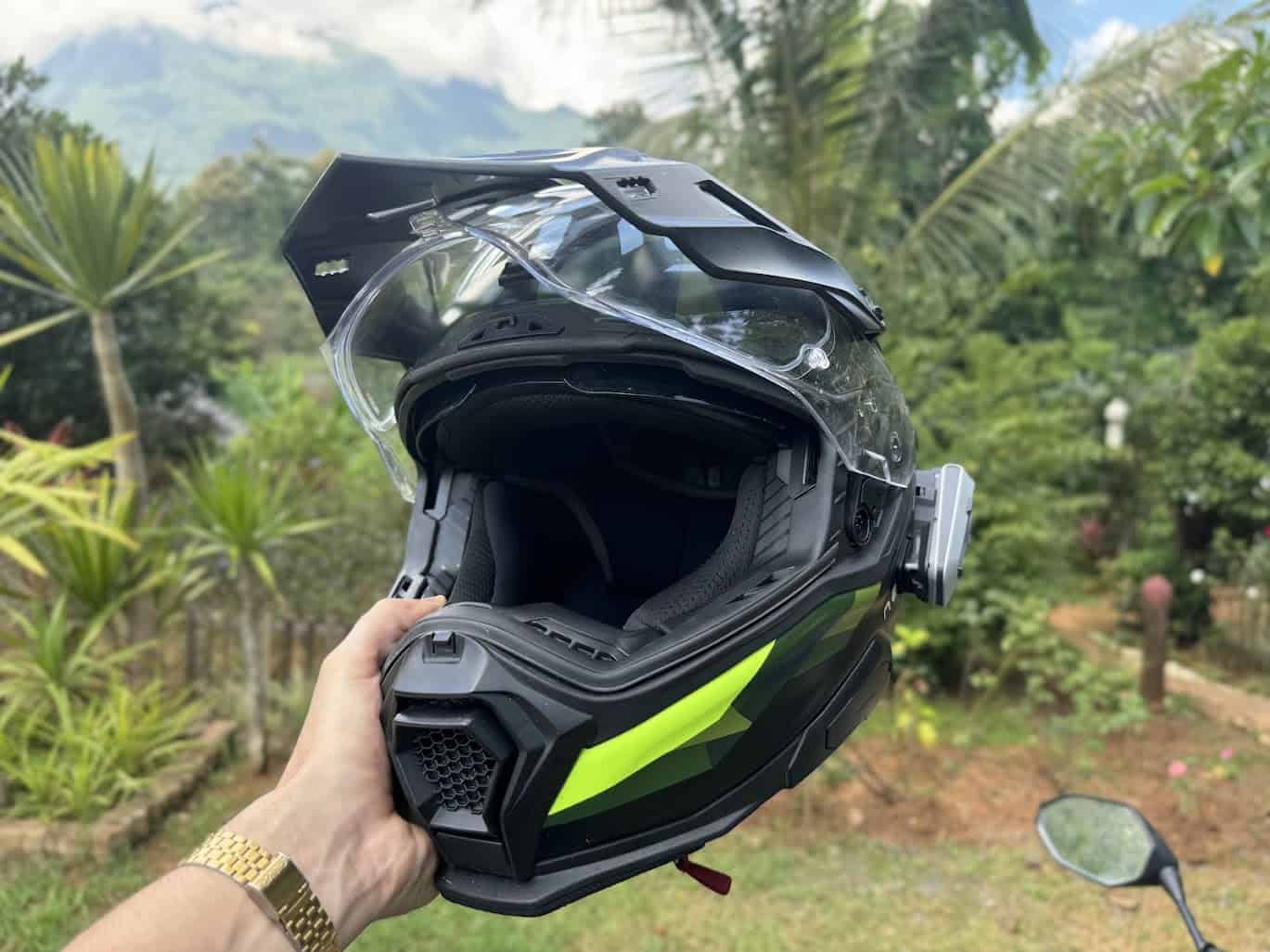
Rider Rants & Raves
Shoei Hornet X2
- Many long-term riders consider it a perfect middle ground between road and off-road use.
- One tester rode 2,600 miles across mixed terrain and called it the quietest ADV helmet they’d used (still louder than pure street lids).
- Strong airflow at speed, but some find the chin bar tight and less breathable in slow, technical riding.
- The peak gets high praise—minimal lift/buffeting and just the right size (“Goldilocks” visor).
- Excellent build quality; the CNS-2 shield feels solid and seals well.
- Pinlock insert helps prevent fogging in wet or humid weather.
- Slightly small sizing—many riders size up for comfort.
- At ~4 lbs, some fatigue on long off-road rides, but weight is balanced and manageable.
- No built-in comms, but shallow speaker pockets make installation clean and easy.
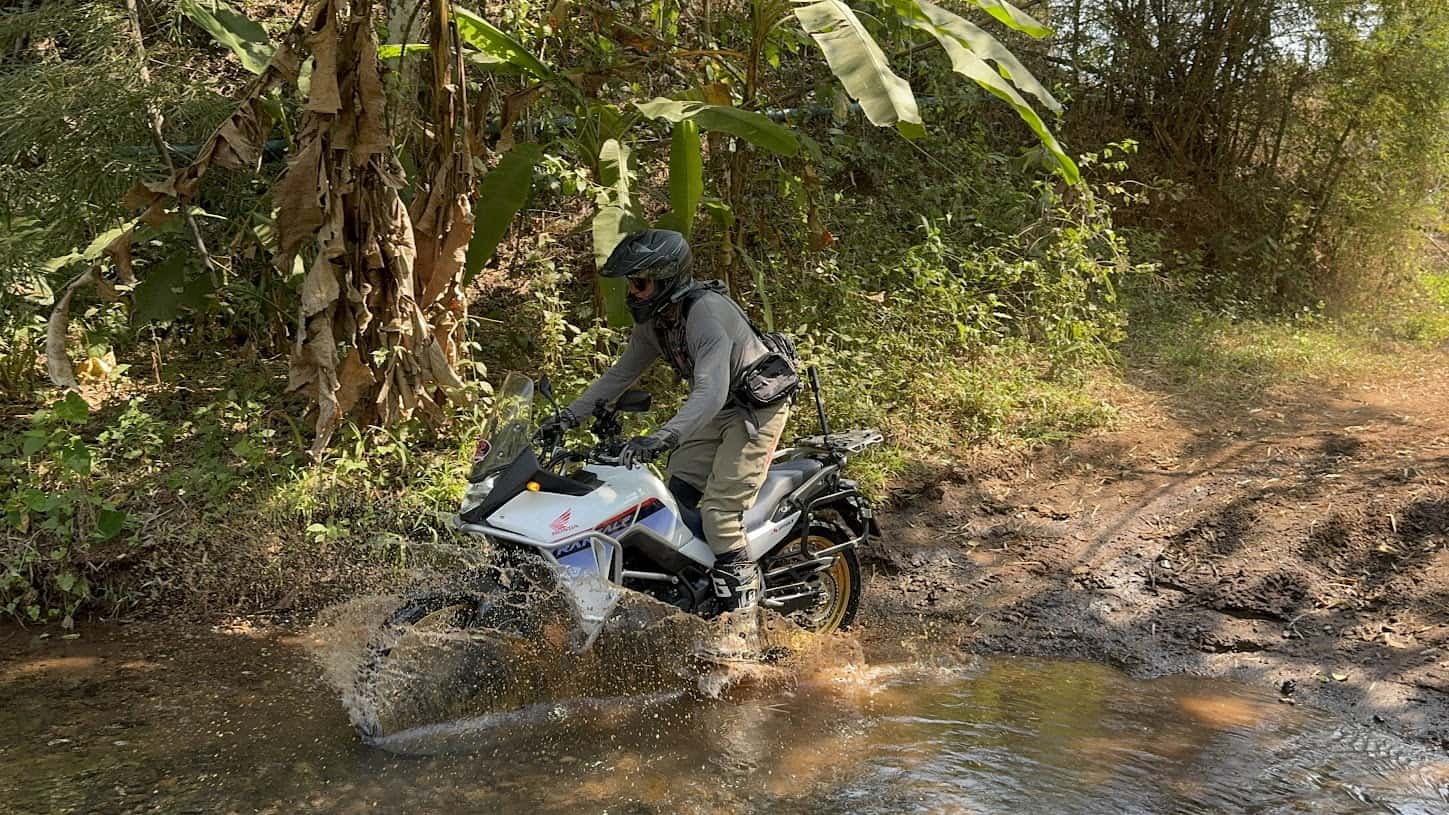
Nexx X.WED3
- Riders agree it’s a feature-rich helmet that punches above its price point.
- Known for its excellent ventilation—especially appreciated in hot, dusty trail conditions.
- Riders love the Mid Airflow Chamber; it keeps things cool without creating annoying drafts.
- Panoramic eye port and oversized drop-down visor help visibility in mixed terrain.
- The F.R.S. system makes cheek pad removal and cleaning easy—even with gloves on.
- MCN reports it’s impressively quiet for a peak-equipped helmet—helped by a smart rubber gasket that minimizes whistling.
- Some find the chin strap too long; it may flap in the wind at speed.
- The intermediate-oval shape fits many heads, but snug cheeks are common until the pads break in.
- Feels very stable on rough roads thanks to its anti-vibration EPS and X-Foam crash bumpers.
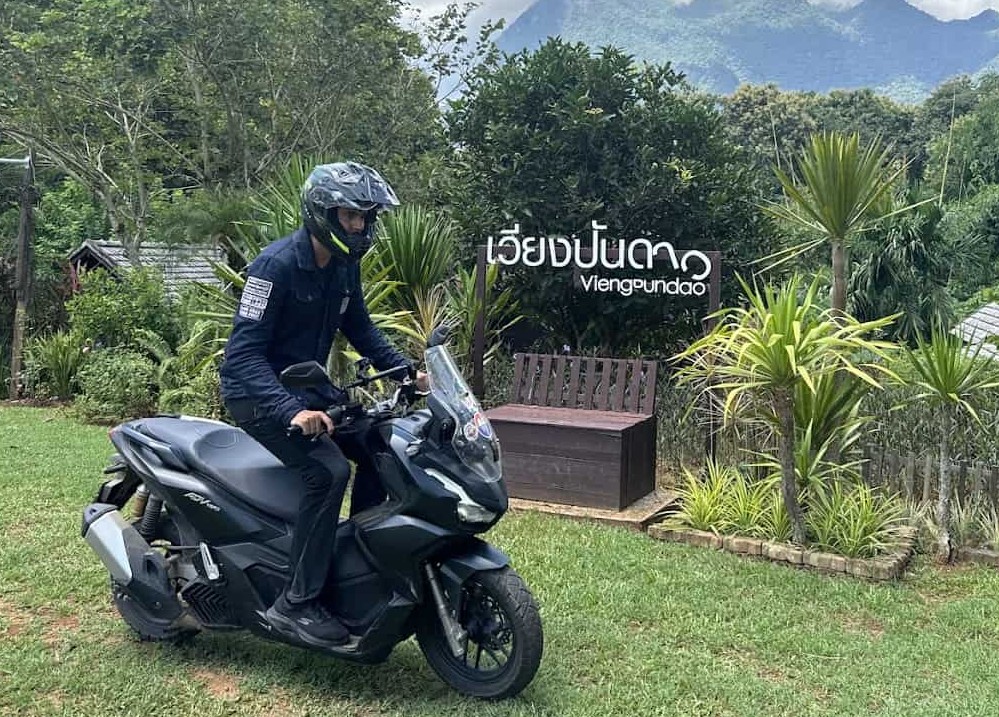
For a deep dive into on-road testing, check out our X.WED3 helmet review where we cover comfort, airflow, and features over a 3-day adventure ride.
Let’s Break It Down: Feature Face-Off
Noise at Highway Speeds
The Hornet X2’s sealed neck roll, chin curtain and V‑460 peak keep wind roar surprisingly low; testers frequently rank it among the quietest adventure helmets. There is still more noise than a pure street helmet, but owners report that high‑frequency whistle and buffeting are minimal.
In contrast, the X.WED3 is quiet for an ADV helmet but not silent. Its multiple vents can produce a light whistle when open; closing the top brow vents remedies this. The rubber gasket between EPS layers dampens vibration well. Both helmets benefit from wearing earplugs on long rides, but the Shoei retains the advantage.
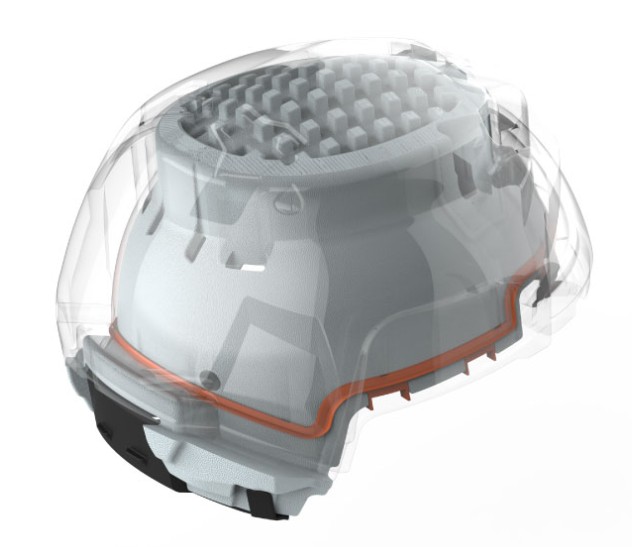
Weight & Fatigue
At roughly 3.9 lb, both the Hornet X2 and composite X.WED3 weigh about the same. The carbon X.WED3 drops to around 3.6 lb, offering a noticeable reduction for riders sensitive to weight. Weight distribution and shell size matter just as much: Shoei’s four shell sizes result in a compact fit and balanced center of gravity. Nexx uses three shell sizes; while comfortable, the helmet can feel taller on smaller head sizes. Riders doing extended off‑road or stand‑up riding may appreciate the carbon variant’s lighter feel.
Ventilation in Heat
Ventilation is where these helmets diverge.
The Hornet X2 uses two shutter‑controlled top vents, a large chin vent and four exhaust ports; the peak channels air into the upper intake. Airflow is effective at speed but less impressive when working hard off‑road; some riders crack the shield for extra air.
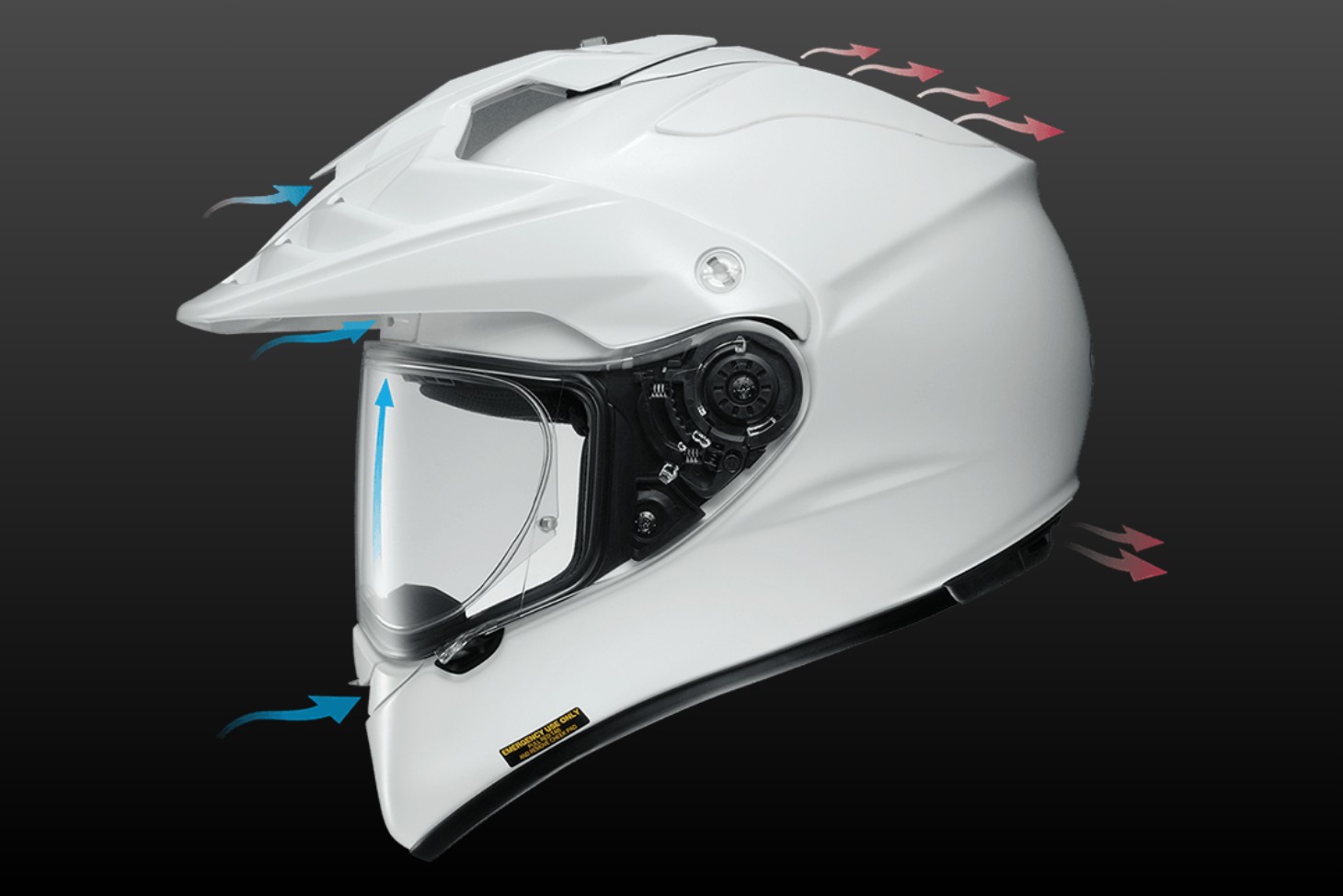
Nexx’s system wins in adjustability: seven closable vents (including three brow intakes) plus four exhausts can be tuned for conditions. The Mid Airflow Chamber and Air Cumbs design create a gap between inner and outer EPS to circulate air around the head. Reviewers note that even at slower speeds, the helmet stays cooler than many competitors, and the included dust filter keeps debris out.
Visor & Sun‑Shield Usability
Shoei’s CNS‑2 shield is clear, distortion‑free and has a robust gasket. It swaps quickly using the QR‑N base plate without removing the peak. There’s no internal sun visor, so riders will need a tinted shield or wear sunglasses. The peak includes louvers that reduce lift but is not adjustable.
Nexx’s visor system emphasizes flexibility: the spring‑loaded Recoil Mechanism pulls the shield tight against a dual‑lip bead for a watertight seal. The drop‑down sun visor is larger than many competitors and can be operated with gloves; the three‑position peak and included extender tailor shade for low‑sun conditions. Riders also appreciate the panoramic eye port and integrated goggle strap.
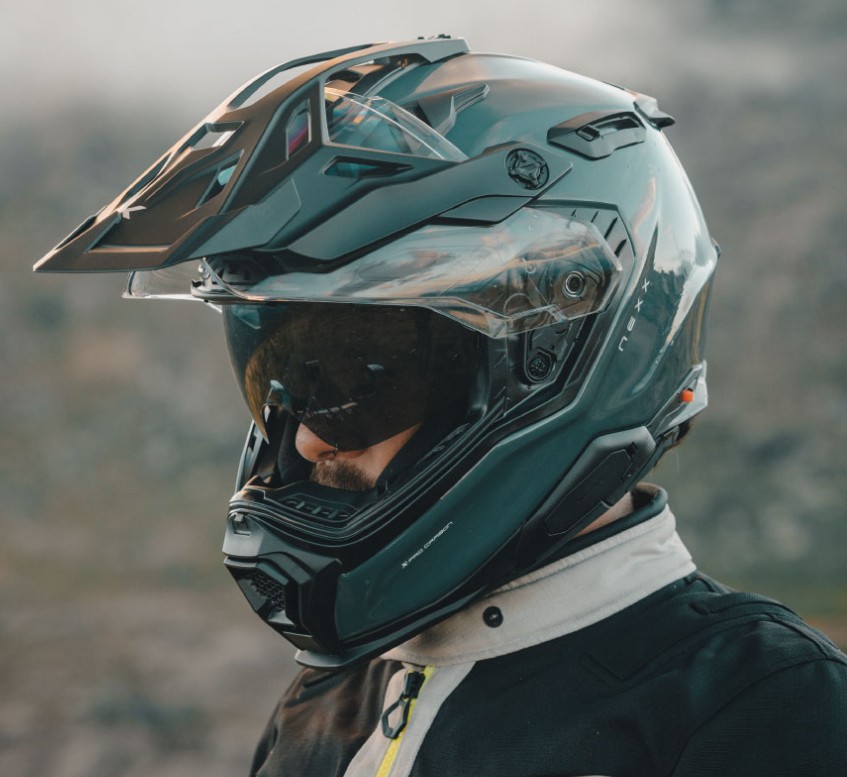
Comms‑Ready Fitment
The Hornet X2 has pockets behind the EPS to accommodate speakers but no integrated routing. Installing a Cardo or Sena unit is straightforward but requires careful placement to avoid pressure on the ear.
Nexx designed the X.WED3 around its optional X‑COM3 intercom: speaker recesses, cable channels and microphone mount points make installation nearly plug‑and‑play, and the helmet’s shell shape hides the unit neatly. Action‑camera mounts on top and side are included—something the Shoei lacks. For riders who record rides or communicate in groups, the Nexx’s integration is a major plus.

Build & Finish
Shoei’s fit and finish are top tier. The AIM+ shell is hand‑built, and the 3D Max‑Dry System II liner is soft yet supportive. The helmet comes with a Pinlock EVO insert, breath guard and chin curtain. Paint quality is excellent, though custom graphics add to the price.
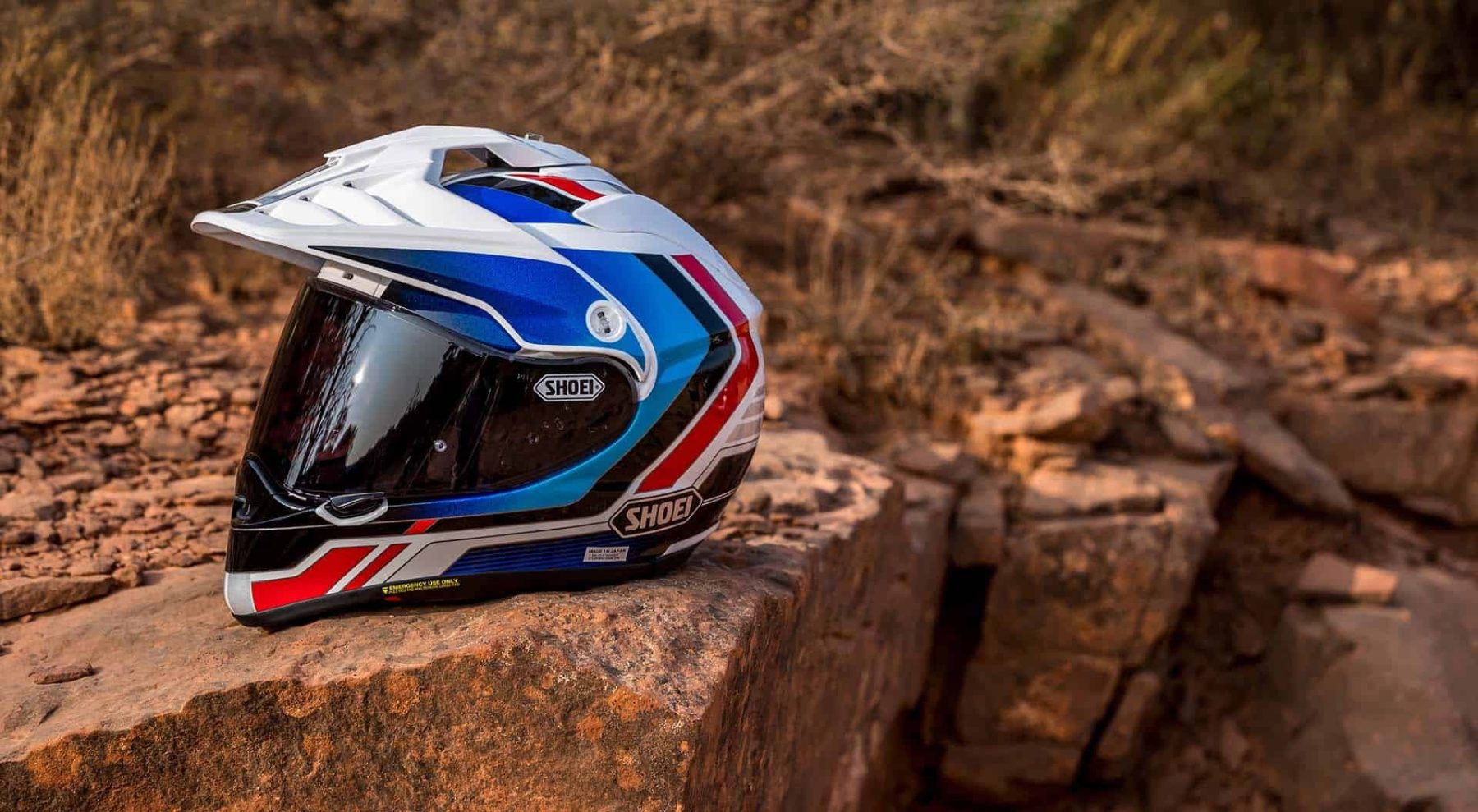
Nexx’s build quality is solid but not as refined; some owners notice minor glue marks or trim misalignment, though this varies by unit. The X‑Mart Dry liner is plush and wicks moisture well. The carbon model’s weave is attractive, but the composite models can feel slightly less premium. Nexx helmets include a Pinlock insert, peak extender, camera mounts and second visor (on carbon versions) for good value.
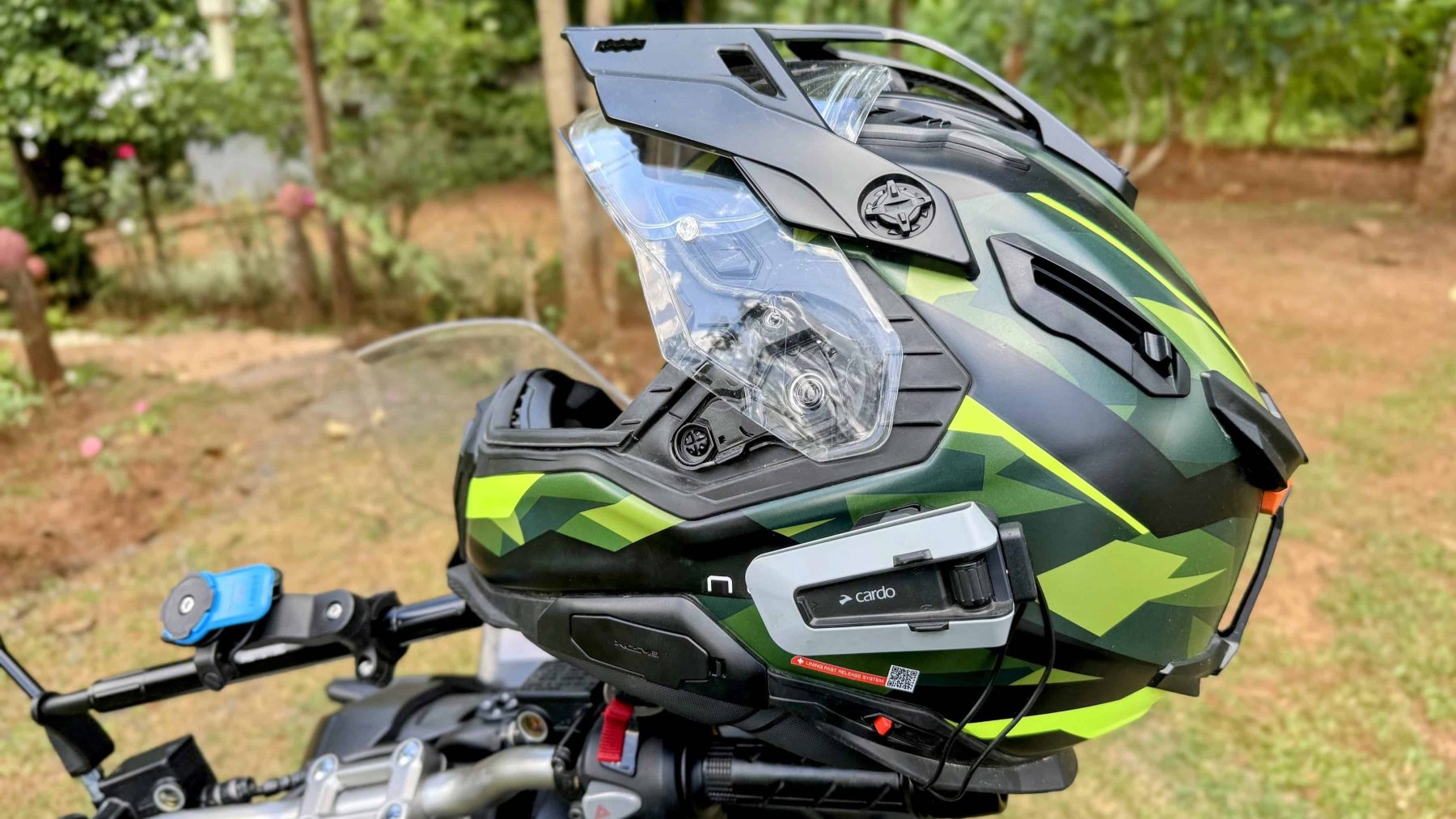
What Are You Really Paying For?
The question many buyers face is whether the Hornet X2’s higher street price justifies its benefits. If your riding leans heavily toward highway touring or you struggle with buffeting and noise on other ADV helmets, the Shoei’s calm manners and long warranty make the premium sensible. The helmet’s durability and Snell certification add peace of mind, and the quality of the liner and visor mechanism reflect the price.
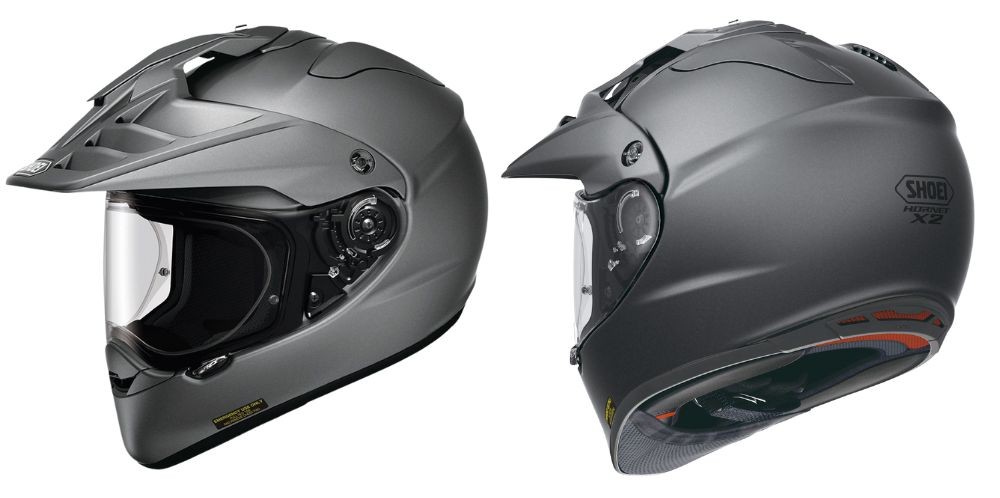
However, if you prioritize airflow, integrated features and budget, the Nexx X.WED3 is very appealing. Composite versions provide ECE 22‑06 and DOT certification at a mid‑range price, while the carbon model offers a weight reduction for less than many other carbon adventure helmets. The built‑in sun visor, adjustable peak, camera mounts and intercom integration deliver a ready‑for‑anything package. Riders who ride in hot climates, change between goggles and shield, or value tech convenience may find the Nexx the smarter spend.
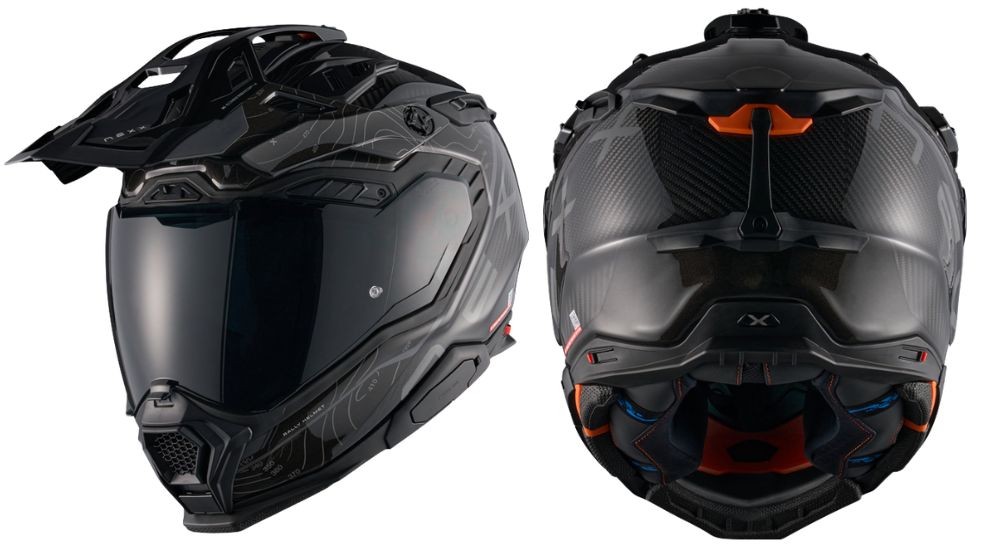
To put it in numbers: a Hornet X2 typically retails around $699 while the X.WED3 composite version starts around $520; that’s about $180 difference for a quieter, slightly better‑finished helmet. Carbon X.WED3 variants close the gap (around $850–$900), at which point the decision centres on weight and features rather than price.
Other Helmets Worth a Look
Arai XD‑5: A top‑tier competitor with a composite shell, advanced ventilation and Arai’s signature comfort. It’s lighter than the Hornet X2 but noisier with the peak installed. The price is similar to the Shoei, making it a worthy alternative for riders who prefer Arai’s long‑oval fit.
The sequel to the legendary XD-4 helmet, this lid improves in every way from its round shell design to its versatility and comfort whether you're thrashing trails or cruising on the highway.
- Quietest ADV helmet
- Removable peak
- Tons of ventilation
- Can use with googles (visor can be removed)
- DOT and Snell approved (ECE in Europe)
- None - one of the best ADV and touring helmets
If you’re also considering the Arai XD‑5 as an alternative to the Shoei, we’ve got a full breakdown in our Shoei Hornet X2 vs Arai XD‑5 comparison.
Klim Krios Pro: A high‑end carbon‑fiber adventure helmet that uses Koroyd impact protection and a Transitions photochromic visor. It’s lighter (~3.25 lb) and has excellent airflow but commands a price north of $750.
Bell MX‑9 Adventure MIPS: A budget‑friendly ADV helmet with a polycarbonate shell and MIPS rotational impact system. It’s heavier (~3.74 lb) and noisier but costs under $300, making it a good entry‑level option.
A budget-friendly dual-sport helmet with Mips safety tech, great airflow, and comms compatibility—ideal for adventure riders on a budget.
- Mips tech for added crash protection
- Excellent ventilation
- Speaker cutouts for easy intercom setup
- Noticeable wind noise at speed
- Some vents can’t be closed
- No internal sun visor
Still on the fence? You’ll find both of these helmets featured in our guide to the best adventure helmets for every type of rider and budget.
Frequently Asked Questions
Does the Hornet X2 run small?
Many riders report that the Hornet X2 has a snug interior. If you’re between sizes, consider ordering one size up or trying the helmet on before purchase. Shoei offers different thickness cheek pads for custom fitting.
Can I fit a communication system in either helmet?
Yes. The Hornet X2 has recessed areas for speakers and supports aftermarket intercoms like Cardo or Sena, though installation requires some effort.
The X.WED3 is designed around the X‑COM3 system, with built‑in speaker pockets, cable routing and a microphone mount. Most universal intercoms will fit.
A seamlessly integrated intercom for Nexx helmets, offering clear audio via Harman Kardon speakers, long battery life, and flexible connectivity across Bluetooth and Mesh.
- Excellent audio clarity with premium sound
- Long-lasting battery life—up to 13 h (Bluetooth)
- Mesh support for large group comms up to 24 riders
- Weather-resistant with USB-C fast charging on the move
- Battery drains faster (~8 h) using Mesh mode
- Voice controls and firmware updates can be clunky
Which helmet is better for glasses wearers?
Both helmets accommodate glasses, but the Hornet X2’s cheek pads are slightly tighter and may require breaking in. The Nexx’s wider eye port and softer cheek‑pad foam make it easier to slide glasses on and off.
Are these helmets stable at highway speeds with the peak attached?
Yes. The Hornet X2’s V‑460 peak is tuned for minimal lift and buffeting; riders report little effect at 70+ mph. The X.WED3’s peak is adjustable and includes an extender; stability is good but may generate slight noise depending on position.
Is the Carbon X.WED3 worth the extra cost?
The carbon version saves about 0.3 lb and includes additional accessories like a second (smoke) visor. If weight savings and premium finish matter to you, it’s worth it. Otherwise, the composite version offers almost all features at a lower price.
A lightweight, carbon-fiber ADV helmet built for long rides—offering top-tier ventilation, built-in tech integration, and high-end comfort in a single package.
- Exceptional airflow keeps cool even in hot, dusty trails
- Lightweight carbon shell reduces long-ride fatigue
- Quick-release liner is easy to remove and clean
- Seamless tech-ready design with intercom and camera prep
- Noise dampening is decent but not top-tier
- Strap and vent position may feel snug until broken in
How do the helmets perform in the rain?
Both helmets include Pinlock inserts that virtually eliminate shield fogging. The Hornet X2’s shield gasket and lock provide an excellent seal, while the X.WED3’s spring‑loaded Recoil system presses the visor against a dual‑lip seal for water tightness. Keep brow vents closed in heavy rain to prevent leaks.
Not sure your comms unit will fit?
Sometimes the perfect helmet comes with a catch—it’s designed around a specific Bluetooth unit. That can make it tough if you prefer something different. With an adapter from Tubs Jackson, you can get a factory fit for any comms units on helmets you actually want to ride in.
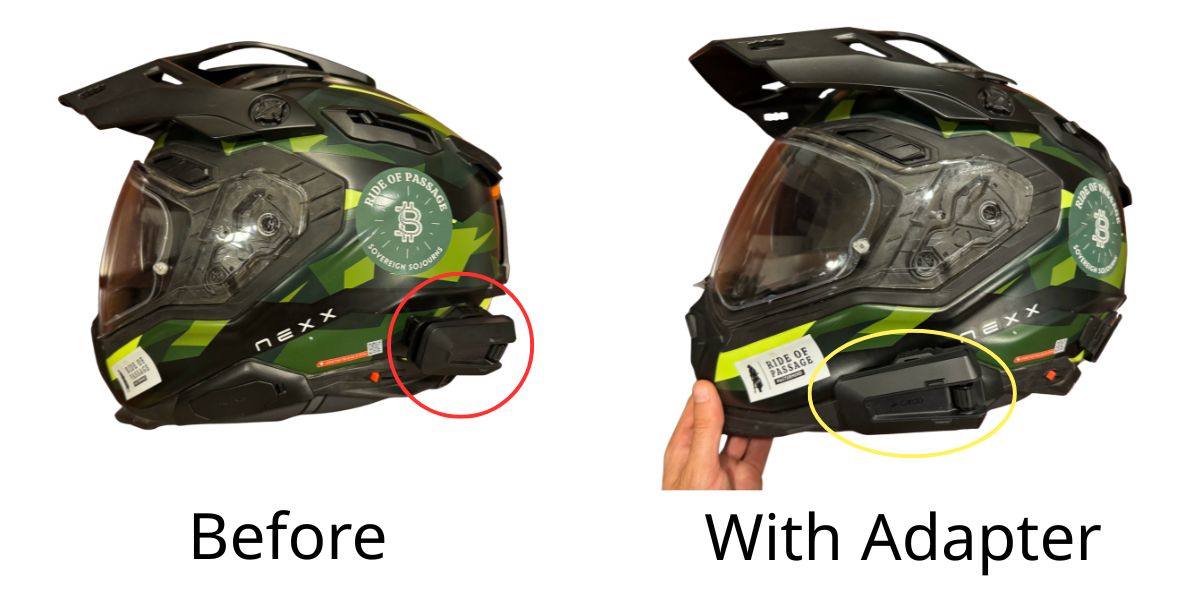
Tubs Jackson is a weird name, I know, but I have their adapter in my Nexx X.WED3 helmet and it’s rock solid. Much nicer than reaching way back to where I had the sticky mount before. I wish I’d thought of this idea.
Tip: Get FREE SHIPPING just by buying here or using code BETTERONTHEROAD at checkout.
Wrapping Up…
At the end of the day, both the Shoei Hornet X2 and Nexx X.WED3 are excellent picks for ADV touring—but they shine in different ways.
Whether you prioritize quiet road performance or airflow and modular features, the best helmet is the one that matches your ride style, head shape, and terrain. Choose the one that feels right—and keeps you exploring longer, farther, and more comfortably.
Shoei Hornet X2 Adventure Helmet delivers the perfect blend of on-road comfort and off-road capability for serious adventure riders. | A premium helmet at midrange price: advanced composite or full carbon fiber shell, flexible ventilation system, integrated comms, and versatile street + off-road design that doesn't require tools to switch. Long term review here. |
|
|
|
|
Shoei Hornet X2 Adventure Helmet delivers the perfect blend of on-road comfort and off-road capability for serious adventure riders.
- Lightweight AIM+ shell for superior protection and aerodynamics
- Advanced ventilation system for optimal airflow in all conditions
- Emergency Quick-Release System for enhanced rider safety
- Runs small, sizing up is recommended
A premium helmet at midrange price: advanced composite or full carbon fiber shell, flexible ventilation system, integrated comms, and versatile street + off-road design that doesn't require tools to switch. Long term review here.
- Big eyeport
- Lightweight
- Anti-vibration system
- So popular it's often out of stock
Related

Carbon Fiber Modular Helmets: Ultimate Flip-Up Lids
Discover carbon fiber modular helmets that deliver flip-up convenience, lightweight strength, and serious protection for every ride.

